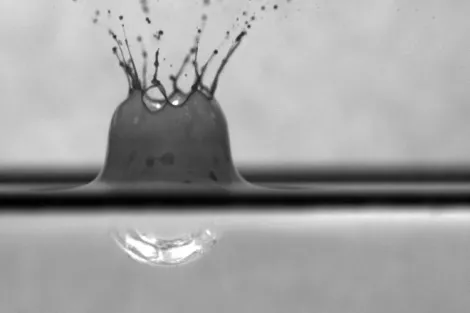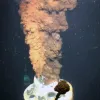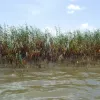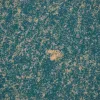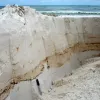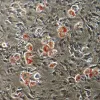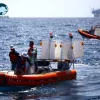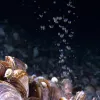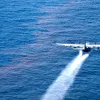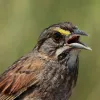The Deepwater Horizonoil spill was a unique spill in at least one way: Instead of spilling at the ocean's surface, oil leaked from a seafloor well 5,000 feet below. How do you recreate and study a large-scale oil spill and its effect on ocean ecosystems in the lab? The DROPPS (Dispersion Research on Oil: Physics and Plankton Studies) project built two four-meter tall tanks. One simulates how oil breaks into droplets when injected underwater, and the other simulates how rising oil droplets interact with plankton drifting in the water column. Using these tanks, they can also investigate what happens when dispersant is added to a deep-sea leak. Here, a drop of water lands on a surface oil slick treated with dispersants.
After the Oil Spill: Research Projects in the Gulf of Mexico with GoMRI
The Gulf of Mexico Research Initiative (GoMRI) was formed as a 10-year independent research program with money provided by BP to fund an independent research program looking at the impact of oil spills on the environment and public health. Five main research themes were chosen by the GoMRI Board at the outset—physical movement of the oil and dispersant, degradation of the oil and its interaction with the ecosystem, environmental effects of the oil and dispersant, development of technology for improved response and remediation, and the effects of oil and dispersant on human health.
You can read more about GoMRI and browse through this slideshow to see some of the ongoing research projects that have been funded. You can also browse through the projects on an interactive map of the Gulf of Mexico.
The Ocean Portal receives support from the Gulf of Mexico Research Initiative (GoMRI) to develop and share stories about GoMRI and oil spill science.
The Gulf of Mexico Research Initiative (GoMRI) is a 10-year independent research program established to study the effect, and the potential associated impact, of hydrocarbon releases on the environment and public health, as well as to develop improved spill mitigation, oil detection, characterization and remediation technologies. For more information, visit http://gulfresearchinitiative.org/.

Looking at Oil Spills Drop by Drop
Credit: David Murphy, John Hopkins University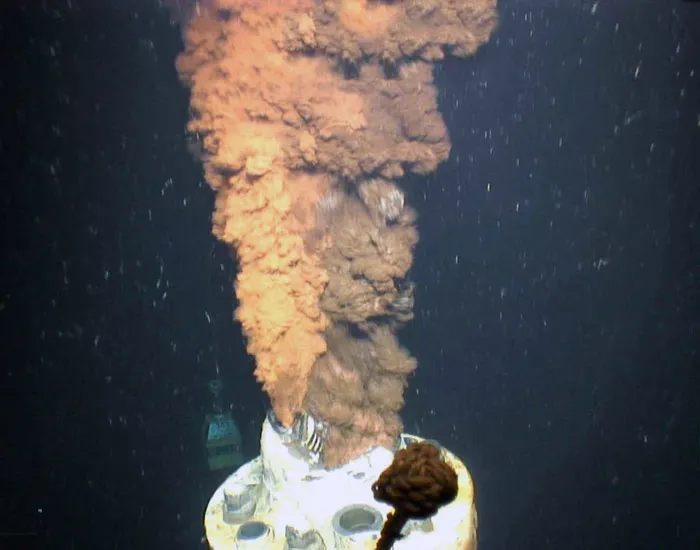
Dispersant in the Deep
Credit: U.S. Geological SurveyDispersants, soap-like chemicals that cause oil to mix with water more easily, have been used with success in surface oil spills to break up slicks. But until Deepwater Horizon, they had never been used during a large deep-water spill, and scientists didn't know whether they would be effective in the deep sea. A joint modeling effort from two GoMRI projects (DEEP-C and C-IMAGE) investigated whether the dispersants applied during the spill actually helped in this deep-sea setting. They found that because the oil was jetting out of the well at high pressure, creating a high amount of water movement at the wellhead, the oil and water mixed naturally. This suggests that the dispersants may not have been an additional help in mixing the two and stopping oil from reaching surface waters.
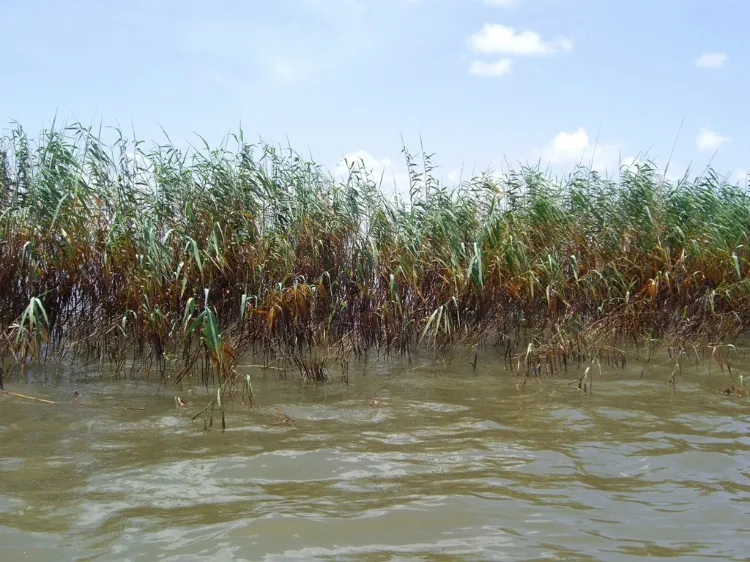
Marsh Erosion Sped Up
Credit: Jessica DillerIt’s easy to imagine that oil slicks inundating marshland would be bad for marsh grass and the animals that reside there. But how does the damage proceed and does it impact the marsh infrastructure itself? A group of GoMRI researchers found that inland marshes were largely untouched by oil—but to the detriment of those plants close to the waterline. The grasses growing 30-60 feet (10-20 meters) from the water blocked oil from reaching inland, but became inundated themselves and were killed. With the grass gone, these oiled areas eroded at twice the rate of non-oiled areas due to the loss of roots that stabilize the sediment. Using satellite data GoMRI researchers can help predict what areas of marsh are most vulnerable in oil spills and prioritize restoration projects.
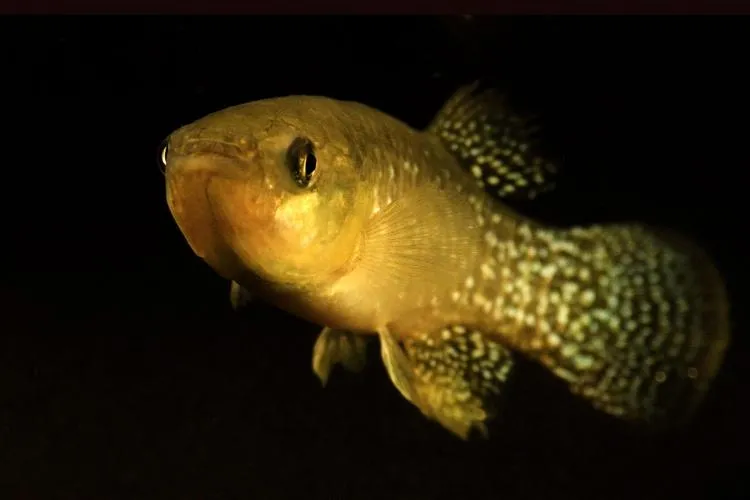
A Tiny Fish Tells A Big Story
Credit: Andrew WhiteheadMany fish, marine mammals and seabirds travel hundreds or even thousands of miles every year over large swaths of sea. That means that, for example, a tuna that was present in the Gulf of Mexico during the spill might be far away when scientists collect information at the site. Gulf killifish (Fundulus grandis)—small, abundant fish that live in Gulf of Mexico estuaries—stay put, however. These and several other life characteristics make the Gulf killifish an excellent representative species for scientists to study in order to learn more about the effects of the oil spill on fish. One GoMRI research group has looked at the genetic response of killifish to oil exposure, while another found that killifish embryos exposed to oiled sediments developed abnormalities.
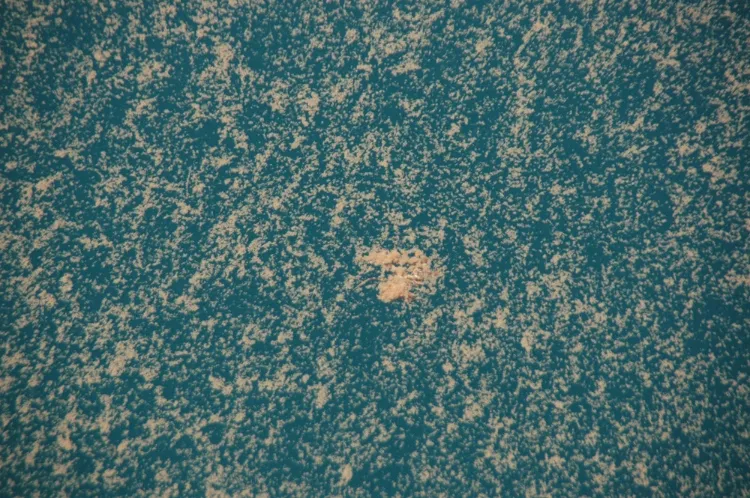
The Dirtiest of Blizzards
Credit: Arne Diercks, University of Southern Mississippi National Institute for Undersea Science and TechnologyThe “Dirty Blizzard of 2010” wasn’t a Nor’Easter. Instead it was a perfect storm of buoyant oil, distressed microbes, and algae in the sea. When oil and gas spilled into the water, many microbes were able to feast and grow. One microbe called Colwellia sp. produces "sea snot"—protein- and sugar-rich compounds—when it is stressed out, such as when it is in the presence of a lot of oil. Buoyant oil, trapped in the sea snot, likely held the marine snow (bits of dead plankton, animals and other organic bits) at the surface for longer than usual. Then the snot clumped up with heavier oil droplets and algae and fell to the seafloor—the dirty blizzard—depositing oil in deep-sea ecosystems.
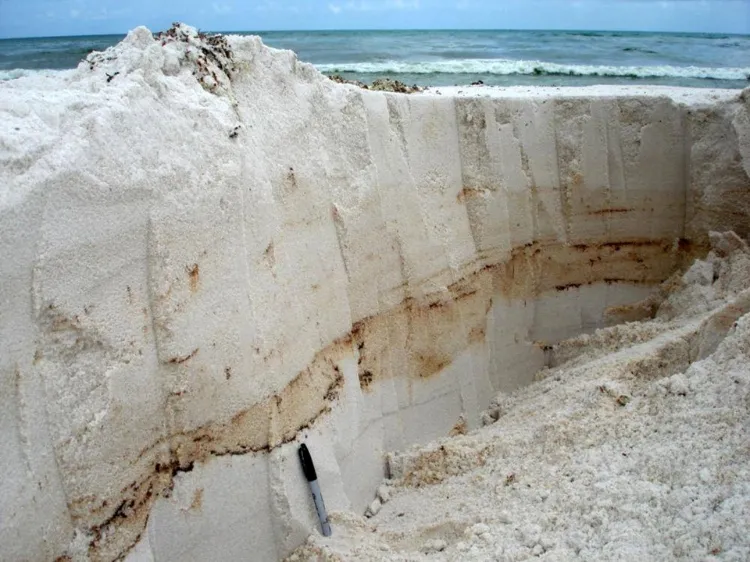
Follow the Fingerprint
Credit: Markus Huettel, Florida State UniversityOnce oil enters the environment—from either an unintentional spill or the natural seeps that occur in the Gulf—it begins to break down, a process called weathering. Weathering occurs when some components of oil evaporate, dissolve, or otherwise break down due to dispersants or turbulent waves. But even weathered oil retains a “fingerprint” of sorts—specific biological, chemical and geological markers that vary from one oil source to another. This fingerprinting allowed researchers to confirm that oil sheens observed in 2012 were not coming from an active leak, and that oil on Gulf beaches buried by sand came from the Deepwater Horizon spill. It can also help determine if storms after the spill exposed oil previously buried beneath the sand or sediment.
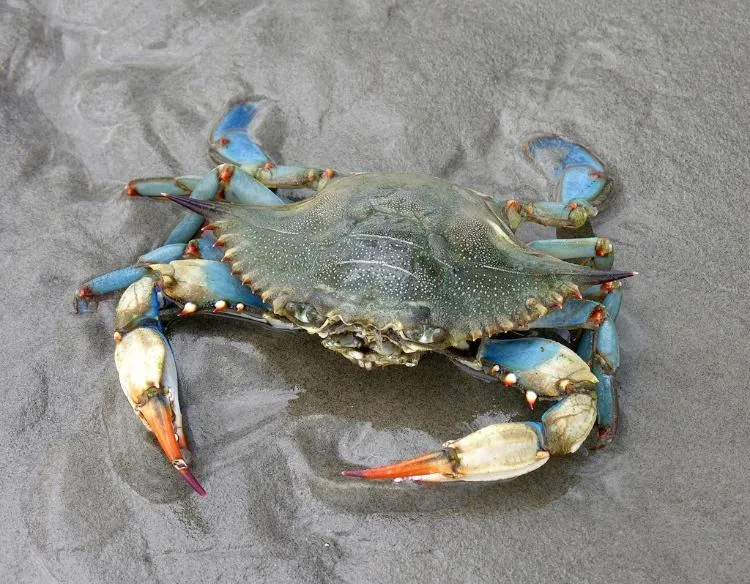
Blue Crabs Improve
Credit: Flickr user jere7my tho?rpeMany factors influence the survival of plants and animals in ecosystems, even during times of crisis like a big oil spill. That makes figuring out the cause of changes a bit like solving a mystery. One group of GoMRI researchers set out to see how the oil spill affected blue crab populations in the Gulf. To their surprise, although some blue crab populations were harmed by the spill, they are doing better than before. But why? There are a few possible answers. During the spill, Gulf fisheries were closed, which allowed more blue crabs to survive instead of being caught for our plates. Another possibility is that larval crabs never drifted into the oil—or maybe the species is more resilient than expected!
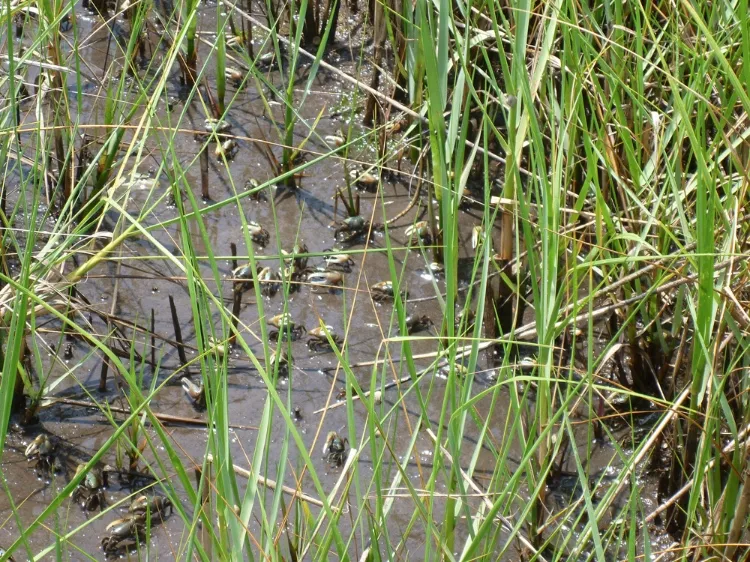
Gulf Marsh Animals Bounce Back But Monitoring Continues
Credit: CWC Consortium, LUMCONCertain residents of oiled marshlands of the Gulf can breathe a sigh of relief. GoMRI researchers found that fish and shellfish populations affected by the spill along the coast of Alabama had recovered to pre-spill numbers by 2011. The researchers can’t speak to long-term or genetic effect, but population numbers for the species they studied were back to pre-spill levels.
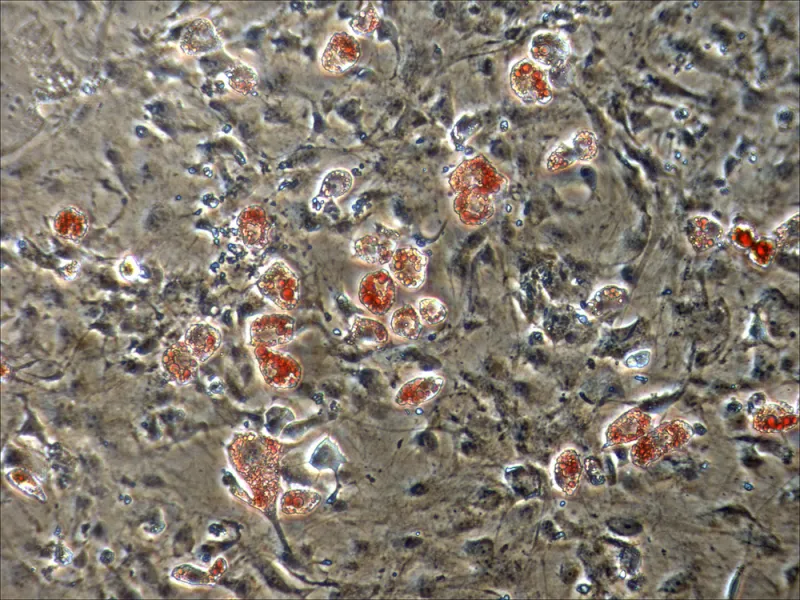
Oil's Effect on our Health
Credit: D. SpyropoulosThe Deepwater Horizon took a human toll: eleven workers died when the rig exploded in April 2010. Clean-up efforts led by the government, BP, non-profits and others were swift but executed cautiously, as some of the methods involved chemicals with unknown effects on human health. It's possible that oil and dispersant may modify our genetic predisposition to disease, a question that GoMRI scientists are investigating. Specifically they are looking to see if compounds in oil and dispersants could cause permanent changes in the functioning of the genes that predispose people to obesity and related metabolic diseases. Here, a laboratory culture dish shows cells from a pygmy sperm whale forming into fat cells (stained in red) after being exposed to endocrine disruptors, including those derived from oil.
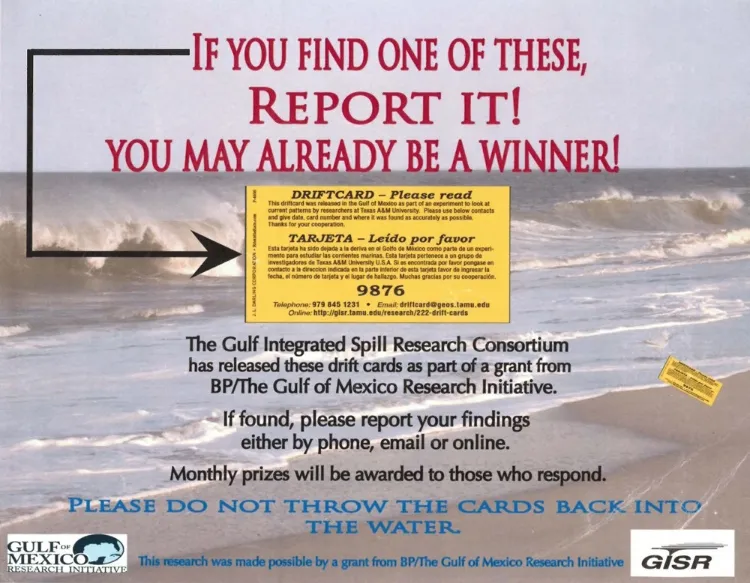
Citizen Science Tracks Oil’s Path
Credit: GISRFind a small yellow card on the beach, and your first inclination might be to toss it in the trash. But these small cards are actually a part of a larger citizen science project led by the Gulf Integrated Spill Research (GISR) consortium. Their aim: to improve predictions of where oil in a spill like Deepwater Horizon will end up after being carried by waves and currents. These biodegradable cards are dropped throughout the Gulf, and as beachgoers find the cards they are asked to report their locations. The new data points can help to refine models of the Gulf’s currents so that future oil spill response can be improved.
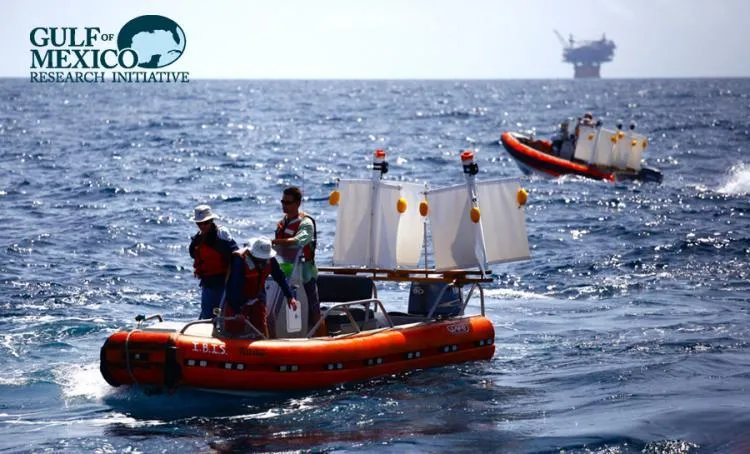
Drifters, Dye, and Drones
Credit: Photo courtesy of CARTHEHow can you follow 3.19 million barrels of spilled oil? Researchers with the Consortium for Advanced Research on Transport of Hydrocarbon in the Environment—or CARTHE—want to better predict where ocean currents carry oil, spreading it across the Gulf of Mexico. The team sent out drifters (large and small) that record thousands of data points about their locations, as well as dye tracked by drones and a helicopter; all in the name of improving models and the response to oil spills in the future.
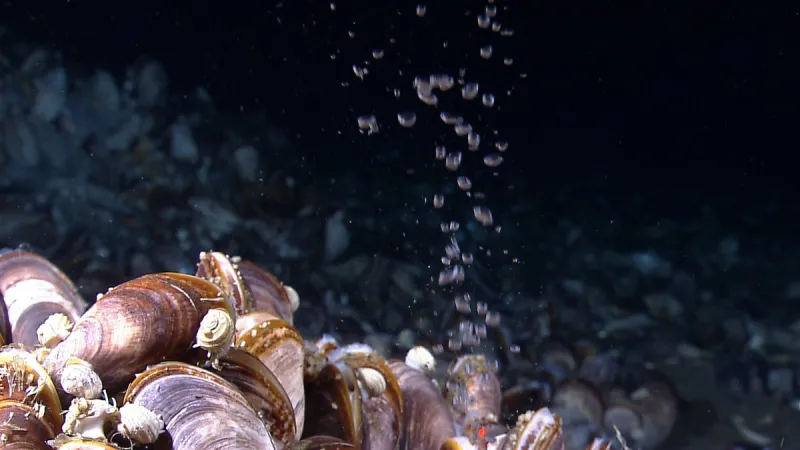
Eat Your Methane Wheaties
Credit: NOAA Okeanos Explorer Program, Gulf of Mexico 2012 ExpeditionMore than oil spilled out of the deep-sea well during Deepwater Horizon; natural gases such as methane spewed out as well. Microbes in the deep sea thrive off of methane, and GoMRI researchers wanted to find out how microbes respond to such a massive and unexpected methane infusion. After consuming the methane, microbes became food for plankton and other organisms, fueling the Gulf's food chain. Here, bubbles of methane gas rise through a mussel bed.
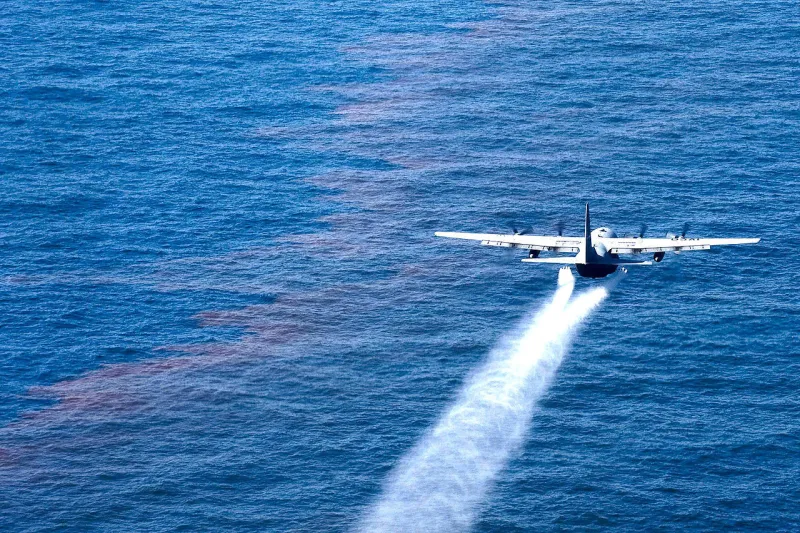
Building a Better Dispersant
Credit: U.S. Air Force, Tech. Sgt. Adrian CadizDispersants are like strong soaps, which cause oil in a spill to break down and mix with water more easily. This speeds up its natural degradation through weathering and consumption by microbes. But dispersants can also enter the food chain and potentially harm wildlife. A group of engineers, chemists and physicists make up “C-MEDS” (short for the Consortium for the Molecular Engineering of Dispersant Systems)—a team that is searching for the next generation of dispersants that can break up oil slicks more efficiently and with less environmental harm.
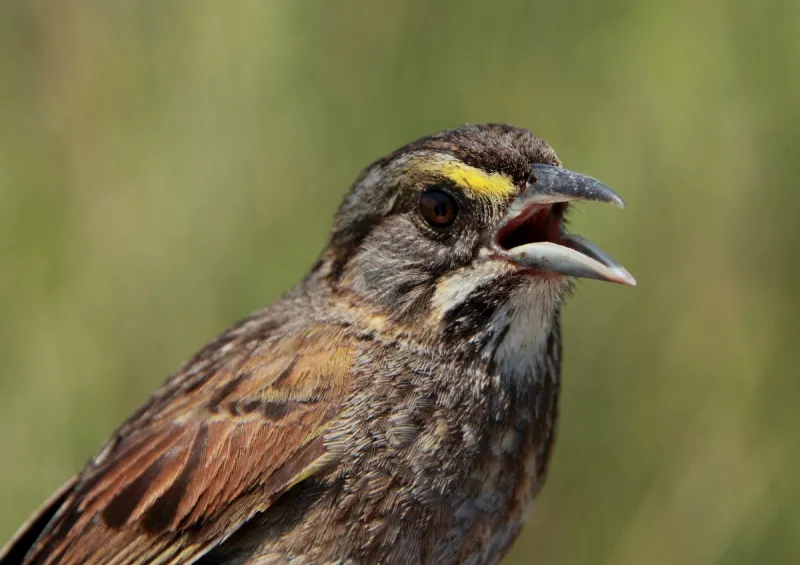
Sparrows Send a Message
Credit: Philip Stouffer, Louisiana State UniversitySeaside sparrows don't dive or swim on the ocean's surface like pelicans and other seabirds. Their dependence on grass for food and shelter means they don't venture far from the marsh, and certainly not out to sea. So, how could these birds be affected by a marine oil spill? Something about the marshlands affected by the spill seems to be harming the nestlings, suggesting that remnants of Deepwater Horizon oil in marshes may impact the species—adults and young—for years to come.
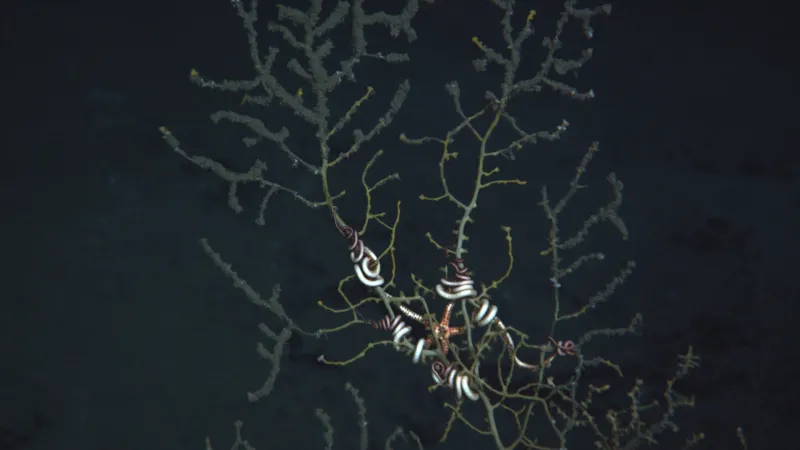
Corals Get Covered
Credit: Chuck Fisher, Penn State UniversityDeep-sea coral communities can be found throughout the Gulf of Mexico on hard-bottomed seafloor. Were they affected when the Macondo wellhead spewed oil and dispersant into the deep sea? Researchers with the Ecological Impacts of Oil and Gas Inputs to the Gulf (ECOGIG) project moved quickly to find coral communities close to the leak, and found several that were covered in a brown oily substance. It may take time to determine all the impacts on these extremely old and slow-growing corals, but already scientists are seeing coral arms break and some corals die.


